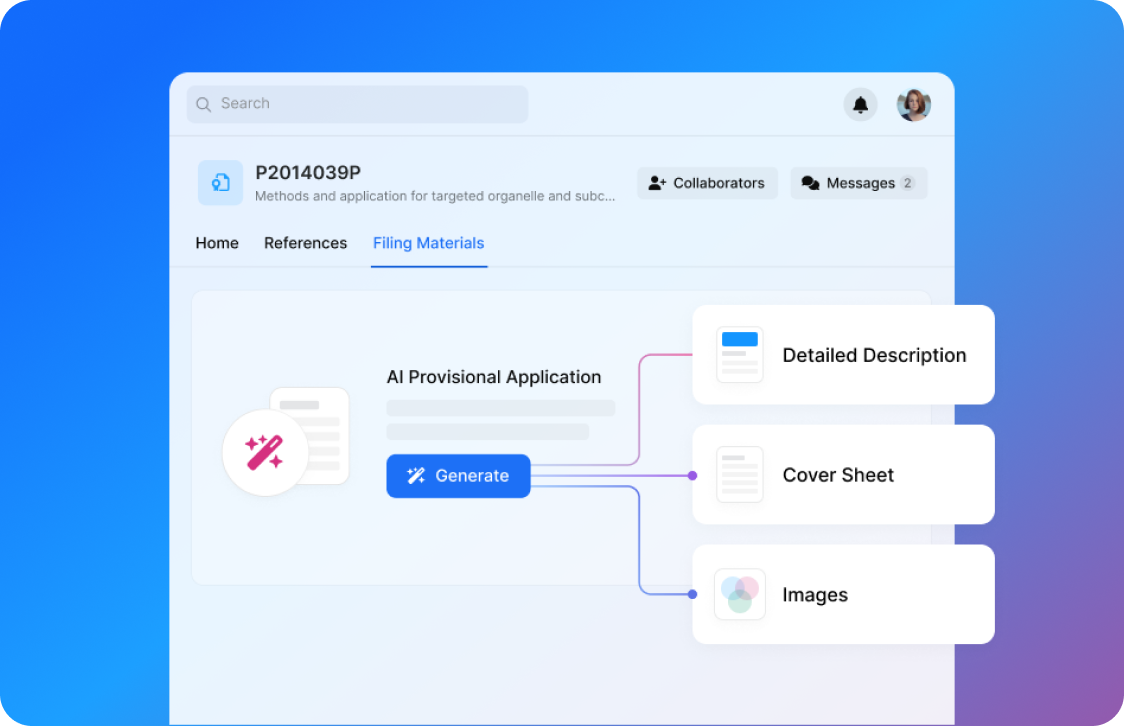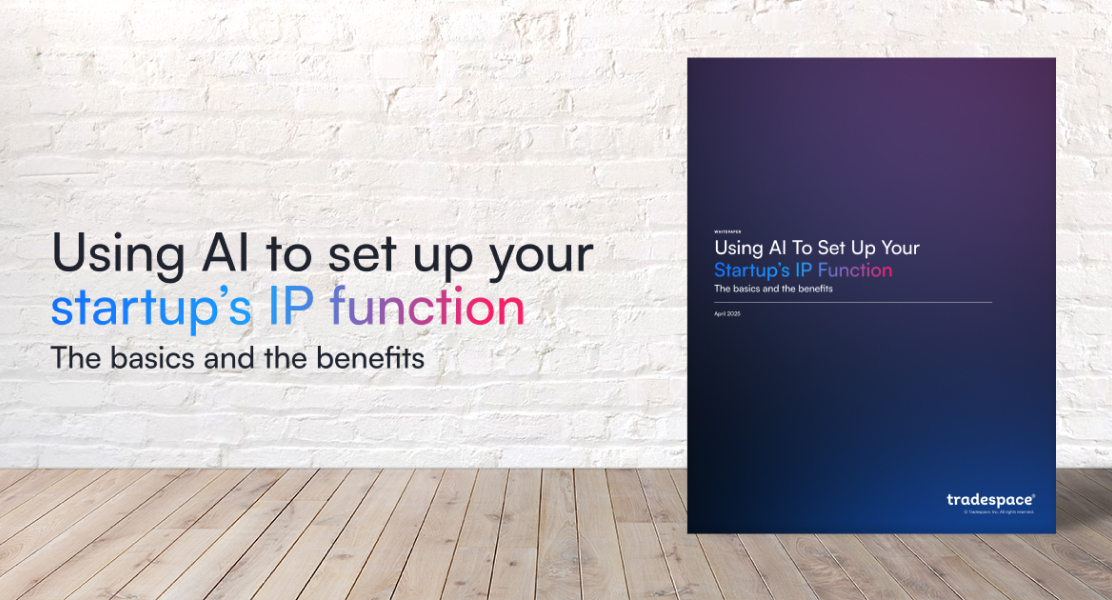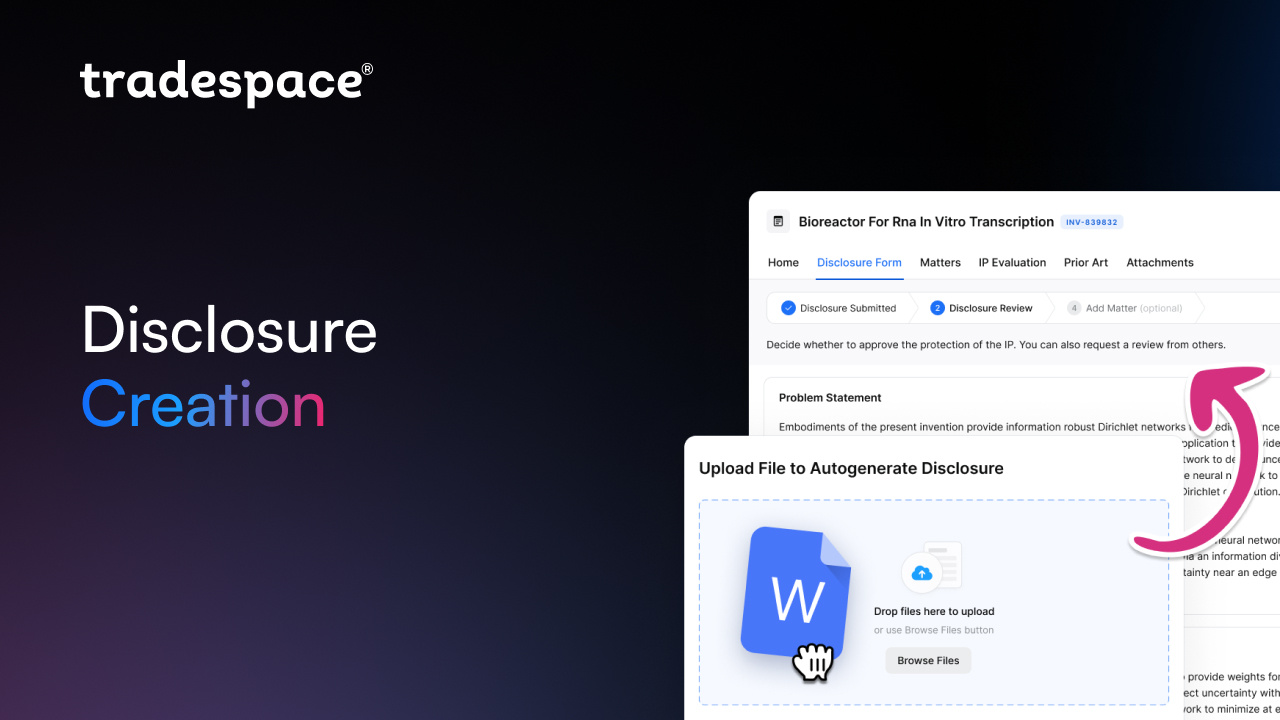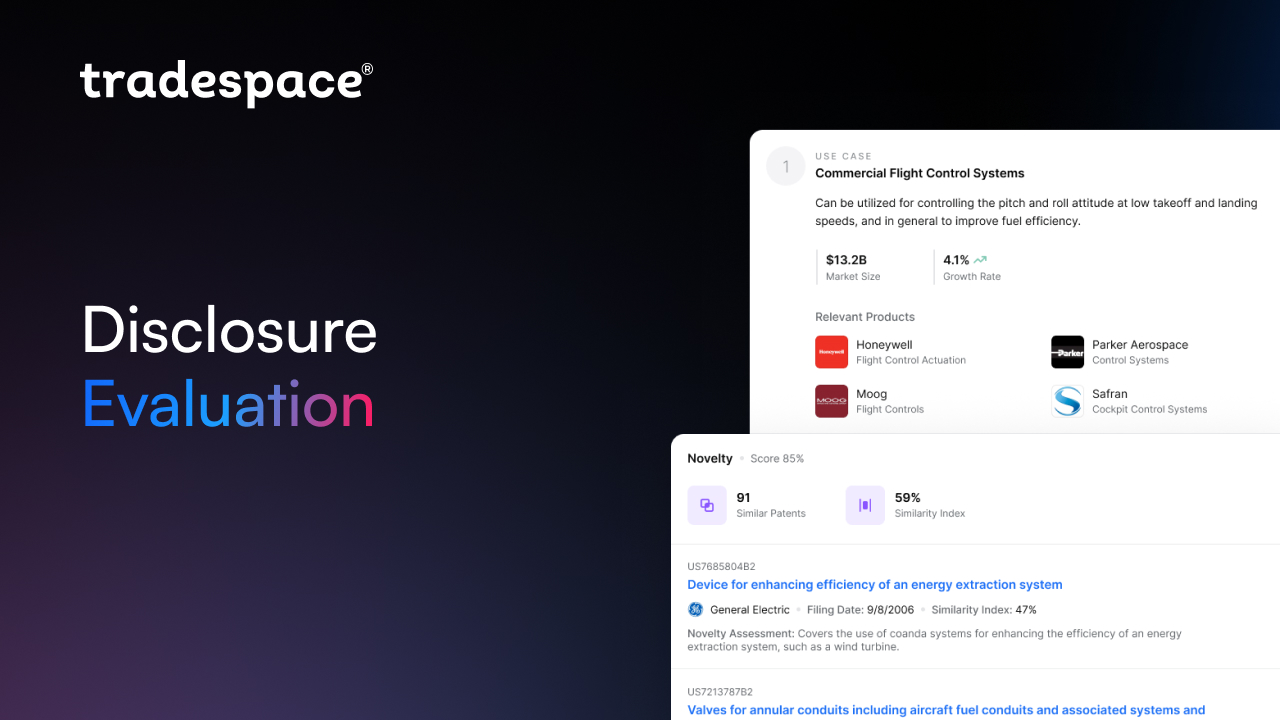How AI remove bottlenecks, improve innovation, and drive patenting
R&D patent tools are currently experiencing a leap in quality and capabilities thanks to the breakthroughs of generative AI and large language models. Embedding these AI advancements into R&D patent tools is paving the way for stronger inventions and more patents for R&D teams. Here’s what they should know when considering AI R&D patent tools.

Why AI-backed R&D patent tools are a worthwhile and timely opportunity for R&D teams
AI patent tools are now sophisticated enough for R&D
In 2017, a paper published by Google called “Attention Is All You Need” opened the door to LLMs by creating a mathematical model for word meaning. Before that, it was difficult for AI to understand word order, which meant it couldn’t properly structure sentences either. Patent law is all about language, so AI patent tools before LLMs were limited in their ability to add value to R&D and IP. Now, LLMs let computers interpret and generate text about new inventions with human proficiency.
IP teams are currently under strain — AI patent tools can help relieve the pressure
Despite a brighter economic outlook for businesses and increased patent filing in 2025, IP teams are facing enormous cost pressures. This trend is likely to only continue — or even pick up — as AI changes expectations around how much companies can get out of their employees. Meanwhile, innovation complexity continues to surge with software becoming even further embedded in more and more products, the advent of AI-driven inventing, and the increasing strategic importance of trade secrets in addition to patents. As IP teams are expected to continue supporting R&D with less and less, looking to AI to drive efficiency and cost savings only makes sense.
What AI in R&D patent tools means for the starting point of patenting, invention disclosure
The patenting process begins at invention disclosure, but most inventions never get submitted to IP. AI-backed R&D patent tools eliminate two of the main barriers to invention disclosure: cumbersome forms and inventors not recognizing an idea’s significance.
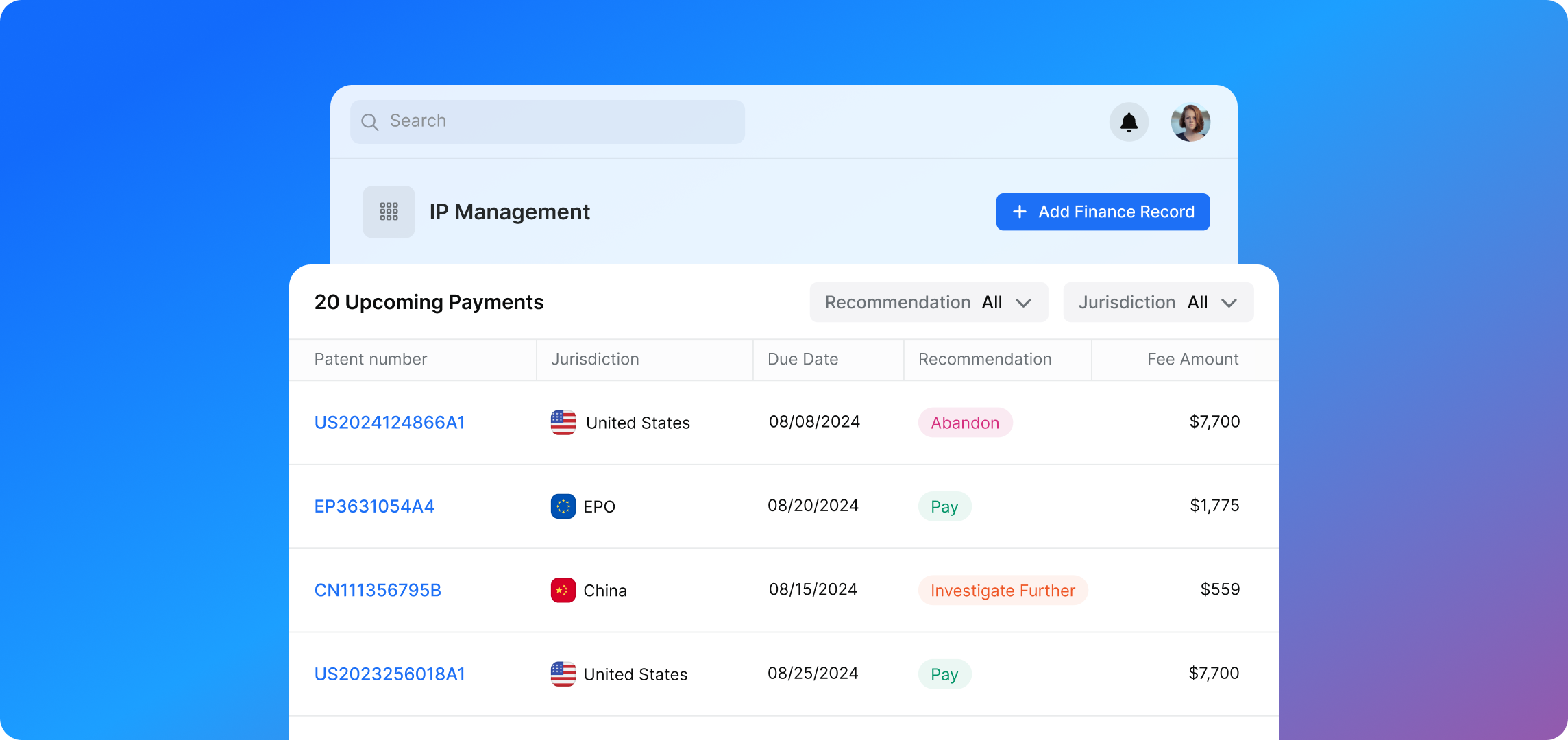
AI R&D patent tools can help inventors better recognize the value of their own inventions
Inventors know that they should submit disclosures for inventions, but there’s a disconnect between what inventors think count as inventions and what IP wants to know about. Inventors often underestimate the significance of their inventions, deeming them routine because they have the “curse of knowledge.” But what’s obvious to them, often highly-talented PhDs, is often a breakthrough to others. This gap prevents inventors from participating in the IP process. AI-backed patent tools instantly help R&D teams understand the significance, novelty, and business cases of their own inventions more deeply.
How AI-integrated R&D patent tooling promotes collaboration between IP and R&D
R&D Patent Tooling + AI
It’s often the case that inventors don’t contact legal until they’re done inventing, or at least until their inventive concepts are fairly mature. AI R&D patent tooling not only lowers the barrier to disclosure, but frees up team capacity for earlier IP involvement.
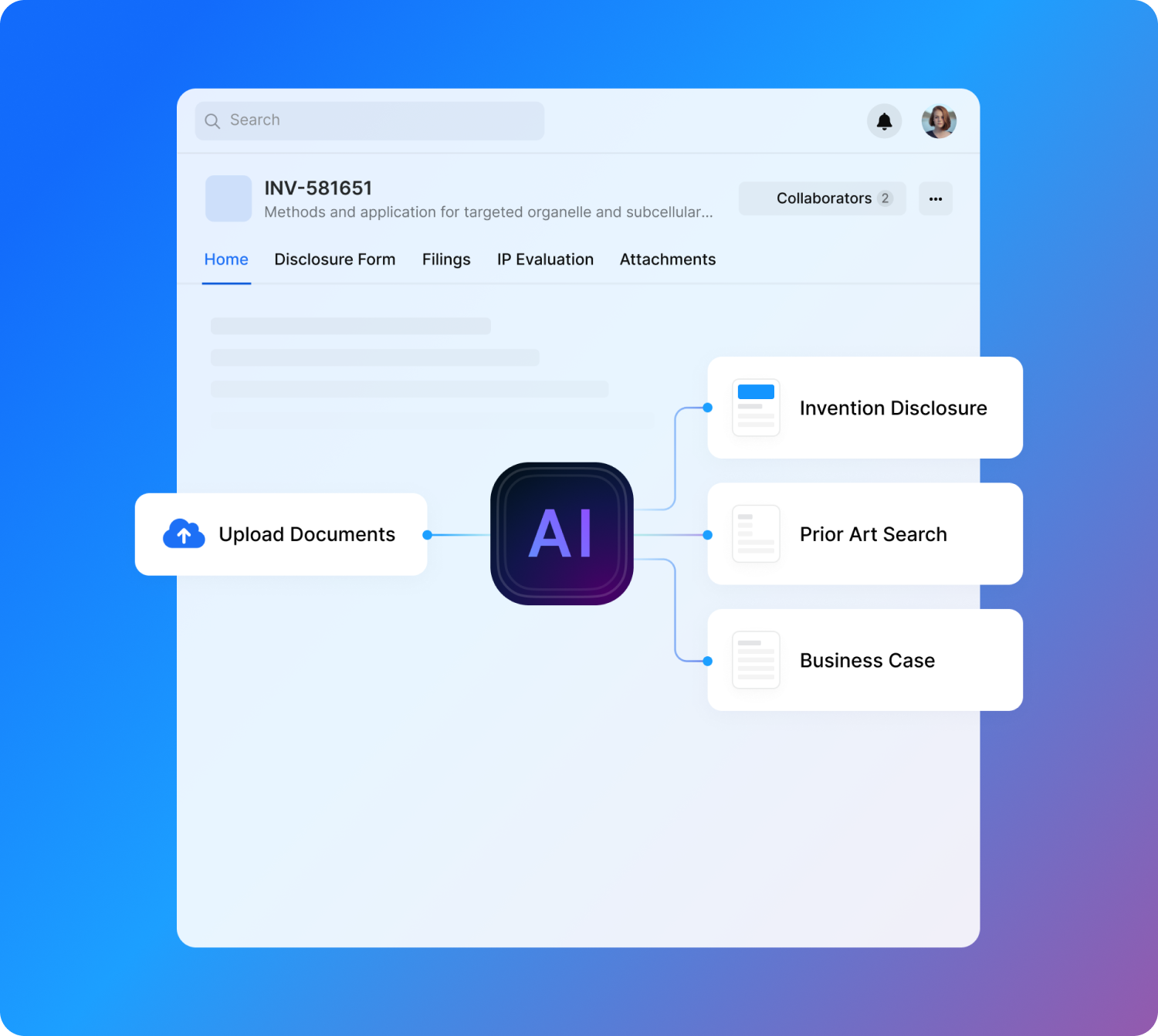
Lack of early IP involvement in the invention process can lead to problems like triggering a patent bar through public disclosure or getting beat to the patent office. Aside from avoiding mistakes, if IP is involved early in the innovation cycle, innovation can be improved too.
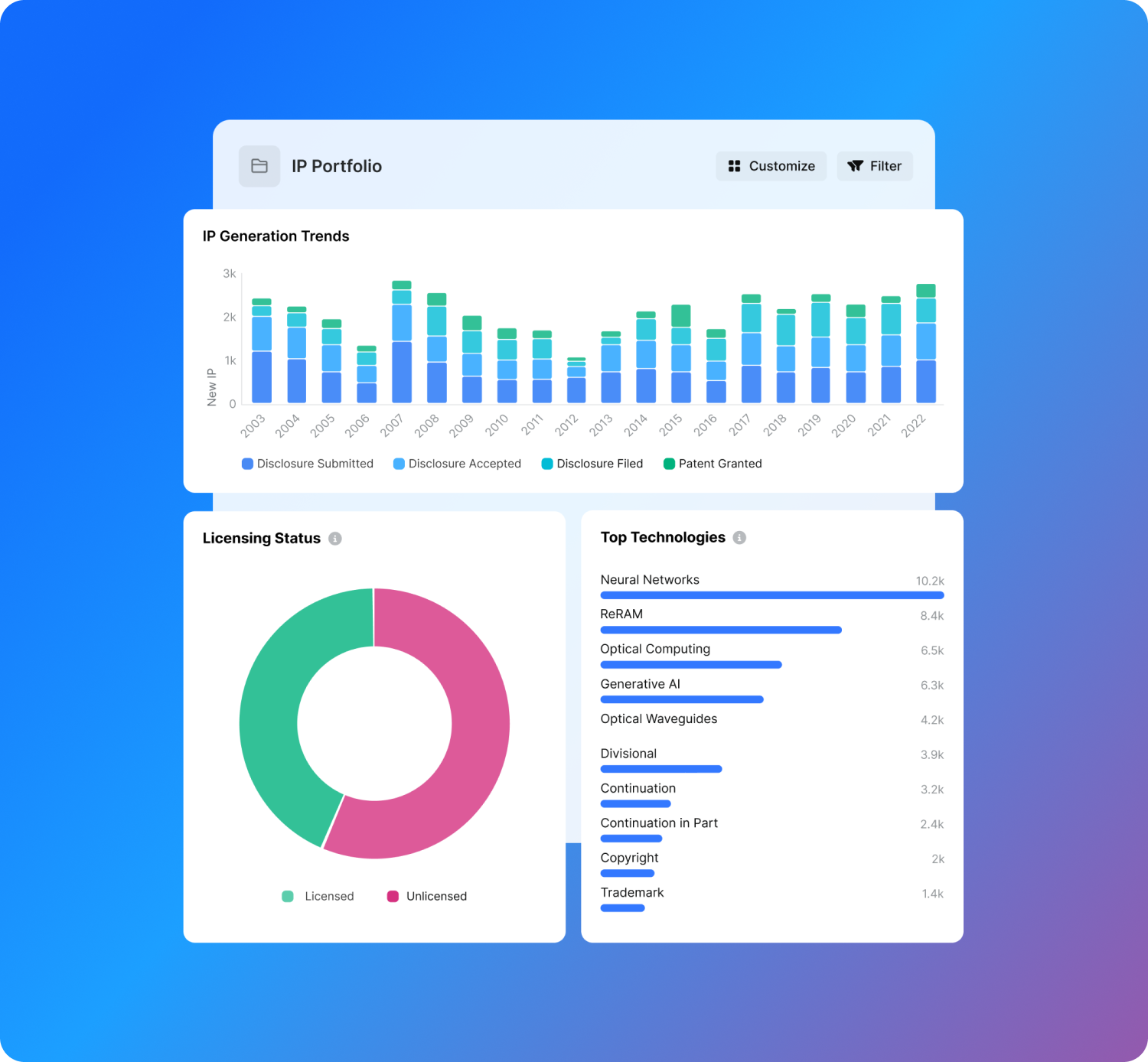
The best innovations have strong demand from the market and qualify for strong IP protection. AI gives R&D and IP teams the time and resources to quickly understand the patent landscapes of R&D investment areas.
